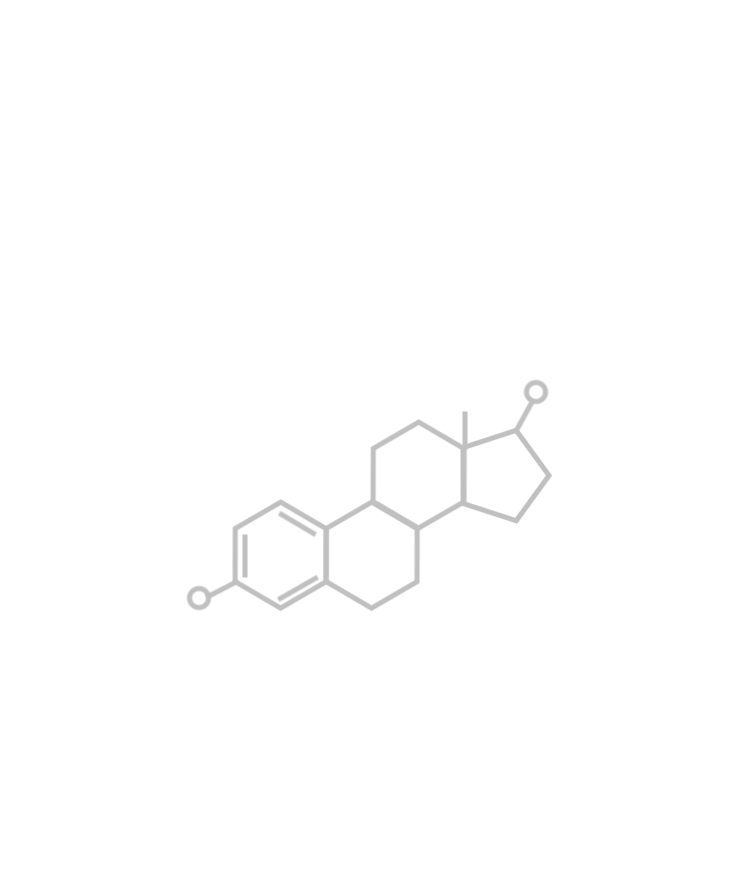Our Research
〰️〰️〰️
Our Research 〰️〰️〰️
Neurobiology of Fear
Disrupted threat processing is a key clinical feature of PTSD, where patients often feel afraid in response to reminders of their traumatic experiences; however, the neurobiology orchestrating fear responding and inhibition in humans is not fully understood. Despite sharing remarkably similar neural structure and function, rodent models of fear learning and memory commonly fail to replicate in humans.
In our research, the CATS Lab employs novel experimental threat paradigms with cutting-edge neuroimaging technologies to bridge these translational gaps and create a more comprehensive, clinically-relevant picture of neural threat processes and circuits in human subjects. In particular, we examine diverse behavioral processes - such as fear and safety generalization, uncertain threat processing - and infrequently studied regions of the brain, including the periaqueductal gray (PAG), habenula, and cerebellum.
Socioenvironmental Context
Outside of the lab, people live rich lives, and these experiences have profound impacts on neurobiological processes and well-being. In particular, beyond discrete trauma exposure, such as a car accident or sexual assault, environmental stressors can get under the skin and become biologically embedded. Individuals living in more disadvantaged communities are disproportionately confronted with personal and structural adversities.
The CATS Lab aims to study how socioenvironmental context shapes brain health and function. We focus on multiple facets of adversity, including exposure to community violence, neighborhood socioeconomic status, and racial discrimination. Along with our commitment to inclusive science, our work in this area aspires to make scientific advances that capture individuals in context and are meaningful for our Tucson community.
PTSD
Posttraumatic stress disorder (PTSD) is linked to widespread changes in the brain structure and function. Precision in neurobiological models of PTSD will lead to improved targets for intervention and prevention.
The CATS Lab focuses on identifying brain-based biomarkers for PTSD and related conditions, such as anxiety and depression, using diverse experimental methods and analyses. Specifically, our work employs measurements of emotional and cognitive processes, along with prospective, longitudinal designs. We also aim to identify generalizable and reproducible brain differences in PTSD by capitalizing on large, multisite imaging datasets, including ENIGMA-PGC PTSD.
Hormones
There are significant disparities in PTSD prevalence, with women being twice as likely to be diagnosed with PTSD. Although this phenomenon is partially attributable to sociocultural factors, such as trauma type, there is also clear evidence for biological sex differences in PTSD. Individuals assigned female at birth typically experience cyclic hormonal fluctuations across the menstrual cycle. These hormones - estrogen and progesterone - have been shown to impact fear learning and memory in the brain.
In emerging work, the CATS Lab seeks to characterize how estrogen modulates neuropsychological function to disrupt fear regulation in trauma-exposed adults.
Current Studies
Neuroimaging Study on Fear Learning
Publications
In press
Laskowitz, S.*, Baird, C. L.*, Huggins, A. A., Bride, J., Nadareishvili, N., Morey, R.A., & Turner, R. W. (in press). Effects of mTBI with loss of consciousness on neurobehavioral symptoms, depression, and insomnia in former collegiate and NFL football athletes, Brain Injury.
Huggins, A. A., Baird, C. L., Briggs, M., Laskowitz, S., Hussain, A., Fouda, S., . . . & Morey, R. A. (in press). Smaller total and subregional cerebellar volumes in posttraumatic stress disorder: A mega-analysis by the ENIGMA-PGC PTSD workgroup. Molecular Psychiatry.
Harb, F.*, Liuzzi, M. T.*, Huggins, A. A., Webb, E. K., Fitzgerald, J. M., Krukowski, J. L., deRoon-Cassini, T. A. & Larson, C. L. (in press). Childhood maltreatment and amygdala-mediated anxiety and posttraumatic stress following adult trauma, Biological Psychiatry: Global Open Science.
Davis, K. E., Tomas, C. W., Webb, E. K., Huggins, A. A., deRoon-Cassini, T. A., Larson, C. L., & Fitzgerald, J. M. (in press). Neural processes of emotional conflict detection and prediction of PTSD symptom clusters in traumatic injury survivors. Psychological Trauma: Theory, Research, Practice, and Policy.
2024
Yang, J., Huggins, A. A., Sun, D., Baird, C. L., Haswell, C. C., Morey, R. A., Sotiras, A., & the ENIGMA-PGC PTSD Consortium (2024). Examining the association between posttraumatic stress disorder and disruptions in cortical networks identified using data-driven methods. Neuropsychopharmacology, 49, 609-619.
Liuzzi, M. T.*, Harb, F.*, Petranu, K., Huggins, A. A., Webb, E. K., Fitzgerald, J. M., Miskovich, T. A., Krukowski, J. L., deRoon-Cassini, T. A., & Larson, C. L. (2024). Childhood threat and deprivation experiences and threat- and reward-related functional connectivity in traumatically injured adults. Biological Psychiatry: Cognitive Neuroscience and Neuroimaging, 9, 227-234.
Suarez-Jimenez, B., Lazarov, A., Zhu, X., Zilcha-Mano, S., Kim, Y., . . . Huggins, A. A., . . . Pine, D.S., Bar-Haim, Y., & Neria, Y. (2024). Intrusive traumatic re-experiencing domain (ITRED) – functional connectivity feature classification by the ENIGMA PTSD Consortium. Biological Psychiatry: Global Open Science, 4, 299-307.
2023
Zhu, X., Kim, Y., Ravid, O., He, X., Suarez-Jimenez, B., . . . Huggins, A. A., . . . Neria, Y.**, & Morey, R. A.** (2023). Neuroimaging-based classification of PTSD using data-driven computational approaches: A multisite big data study from ENIGMA-PGC PTSD Consortium. NeuroImage, 283, 120412.
Webb, E. K., Timmer-Murillo, S. C., Huggins, A. A., Tomas, C. N., deRoon-Cassini, T. A., & Larson, C. L. (2023). Attributional negativity bias and acute stress disorder symptoms mediate the relationship between trauma history and future PTSD. Journal of Traumatic Stress, 36, 785-795.
2022
Huggins, A. A., McTeague, L. M., Davis, M. M., Bustos, N., Crum, K., Polcyn, R., Adams, Z. W., Carpenter, L. A., Hajcak, G., Halliday, C. A., Joseph, J. E., & Danielson, C. K. (2022). Neighborhood disadvantage associated with blunted amygdala reactivity to predictable and unpredictable threat in a community sample of youth. Biological Psychiatry: Global Open Science, 2, 242-252.
Tomas, C. W., Webb, E. K., Bennett, K. P., Huggins, A. A., Fitzgerald, J. M., Miskovich, T. A., Krukowski, J., deRoon-Cassini, T. A., & Larson, C. L. (2022). Neighborhood socioeconomic disadvantage and the neurobiology of uncertainty in traumatically injured adults. Biological Psychiatry: Global Open Science, 2, 263-272.
Webb, E. K.*, Bird, C. M.*, deRoon-Cassini, T. A., Weis, C. N., Huggins, A. A., Fitzgerald, J. M., Miskovich, T. A., Bennett, K. P., Krukowski, J., Torres, L., & Larson, C. L. (2022). Racial discrimination is associated with modified resting-state functional connectivity of salience network nodes in traumatically-injured adults. JAMA Network Open, 5, e2144759.
Weis, C. N., Bennett, K. P., Huggins, A. A., Parisi, E. A., Gorka, S. M., & Larson, C. L. (2022). Functional connectivity of the periaqueductal grey during rest and uncertain threat using high resolution 7-Tesla MRI. Social Cognitive and Affective Neuroscience, 17, 187-197.
Fitzgerald, J. M.*, Webb, E. K.*, Weis, C. N., Huggins, A. A., Bennett, K. P., Miskovich, T. A., Krukowski, J. L., deRoon-Cassini, T. A.**, & Larson, C. L.** (2022). Hippocampus resting-state functional connectivity forecasts individual PTSD symptoms: A data-driven approach. Biological Psychiatry: Cognitive Neuroscience and Neuroimaging, 7, 139-149.
2021
Weis, C. N., Huggins, A. A., Miskovich, T. A., Fitzgerald, J. M., Bennett, K. P., Krukowski, J. L., Webb, E. K., deRoon-Cassini, T. A.**, & Larson, C. L.** (2021). Acute white matter integrity post-trauma predicts chronic PTSD symptoms. Frontiers in Human Neuroscience, 15, 742198.
Webb, E. K.*, Weis, C. N.*, Huggins, A. A., Fitzgerald, J. M., Bennett, K. P., Bird, C., Parisi, E. A., Kallenbach, M., Krukowski, J., deRoon-Cassini, T. A.**, & Larson, C. L.** (2021). Neural impact of neighborhood socioeconomic disadvantage in traumatically-injured adults. Neurobiology of Stress, 15, 100385.
Huggins, A. A., Weis, C.N., Parisi, E. A., Bennett, K. P., Miskovic, V., & Larson, C. L. (2021). Neural substrates of human fear generalization: A 7T-fMRI investigation. NeuroImage, 239, 118308.
Weis, C. N.*, Webb, E. K.*, Huggins, A. A., Kallenbach, M., Miskovich, T. A., Fitzgerald, J. M., Bennett, K. P., Krukowski, J. L., deRoon-Cassini, T. A.**, & Larson, C. L.** (2021). Stability of hippocampal subfield volumes after trauma and relationship to development of PTSD symptoms. NeuroImage, 236, 118076.
Ritchay, M. M., Huggins, A. A., Wallace, A. L., Larson, C. L., & Lisdahl, K. M. (2021). Resting state functional connectivity in the default mode network: Relationships between cannabis use, gender, and cognition in adolescents and young adults. NeuroImage: Clinical, 30, 102664.
Webb, E. K., Weis, C. N., Huggins, A. A., Parisi, E. A., Bennett, K. P., Miskovich, T. A., Hanson, J., deRoon-Cassini, T. A.**, & Larson, C. L.** (2021). Neighborhood disadvantage is associated with stable deficits in neurocognitive functioning. Health and Place, 67, 102493.
2020
Huggins, A. A., Harvey, A. M., Miskovich, T. A., Lee, H., & Larson, C. L. (2020). Resting state functional connectivity of supplementary motor area associated with skin-picking symptom severity. Journal of Obsessive-Compulsive and Related Disorders, 26, 100551.
Webb, E. K.*, Huggins, A. A.*, Belleau, E. L., Taubitz, L., Hanson, J. L., deRoon-Cassini, T. A.**, & Larson, C. L.** (2020). Acute posttrauma resting-state functional connectivity of periaqueductal gray prospectively predicts posttraumatic stress disorder symptoms. Biological Psychiatry: Cognitive Neuroscience and Neuroimaging, 5(9), 891-900
2019
Weis, C. N., Huggins, A. A., Bennett, K. P., Parisi, E. A., & Larson, C. L. (2019). High resolution resting state functional connectivity of the extended amygdala. Brain Connectivity, 9, 627-637
Huggins, A. A., Weinberg, A., Gorka, S. M., & Shankman, S. A. (2019). Blunted neural response to gains versus losses associated with both risk-prone and risk-averse behavior in a clinically diverse sample, Psychophysiology, 56, e13342.
2018
Huggins, A. A., Belleau, E. L., Miskovich, T. A., Pedersen, W. S., & Larson, C. L. (2018). Moderating effects of harm avoidance on resting state functional connectivity of the anterior insula, Frontiers in Human Neuroscience, 12, 447.
Huggins, A. A., Gorka, S. M., & Shankman, S. A. (2018). The moderating role of gender on the association between childhood trauma and risk-taking propensity. Graduate Student Journal of Psychology, 17, 5-17.
2017
Lieberman, L., Stevens, E. S., Funkhouser, C. J., Weinberg, A., Sarapas, C., Huggins, A. A., & Shankman, S. A. (2017). How many blinks are necessary for a reliable startle response? A test using the NPU-threat task. International Journal of Psychophysiology, 114, 24-30.
2016
Lieberman, L., Liu, H., Huggins, A.A., Katz, A.C., Zvolensky, M.J., & Shankman, S.A. (2016). Comparing informant- and self-reports of personality to laboratory indices of emotional responding as criterion variables. Psychophysiology, 53, 1386-1397.
Lieberman, L., Gorka, S. M., Huggins, A. A., Katz, A. C., Sarapas, C., & Shankman, S. A. (2016). Agreement between self and informant-reported ratings of personality traits: The moderating effects of major depressive and/or panic disorder. Journal of Nervous and Mental Disease, 204, 306-313.
2014
Gorka, S. M., Huggins, A. A., Fitzgerald, D. A., Nelson, B. D., Phan, K. L., & Shankman, S. A. (2014). Neural response to reward anticipation in those with and without panic disorder. Journal of Affective Disorders, 164, 50-56.




